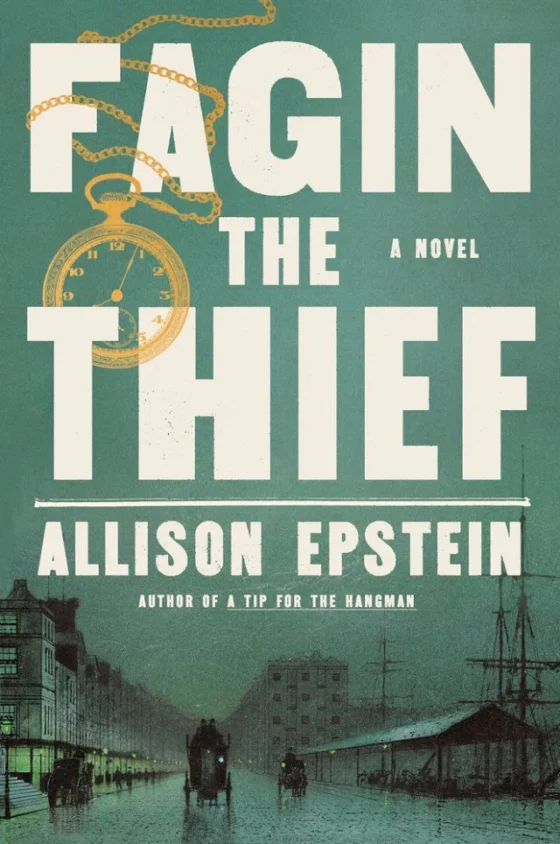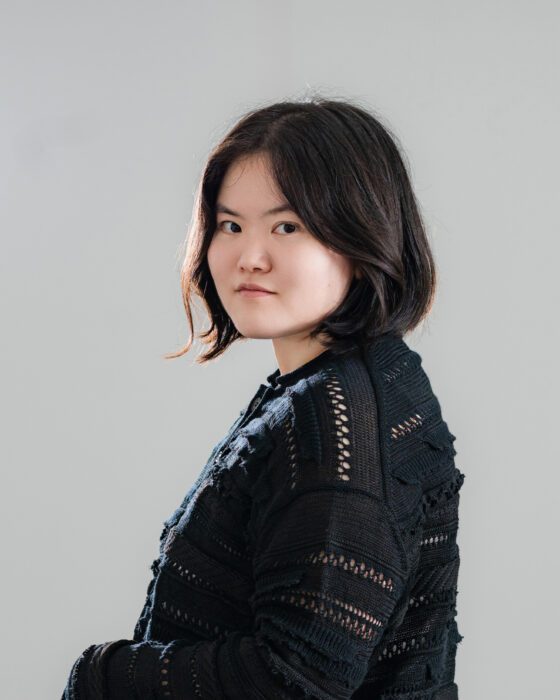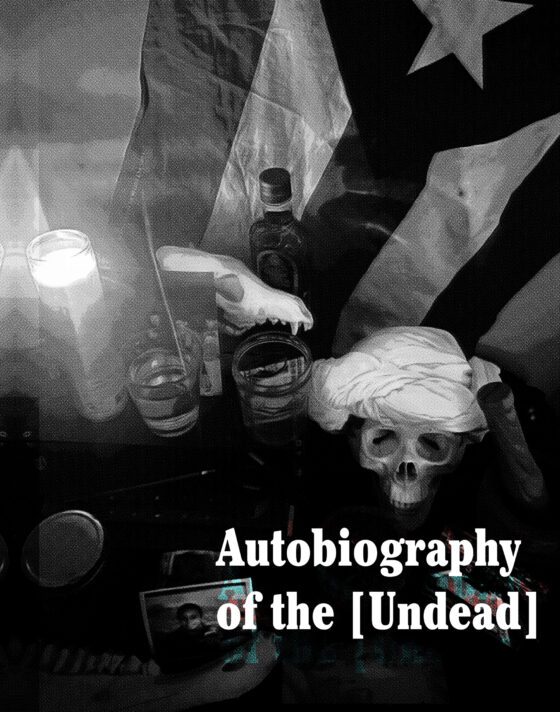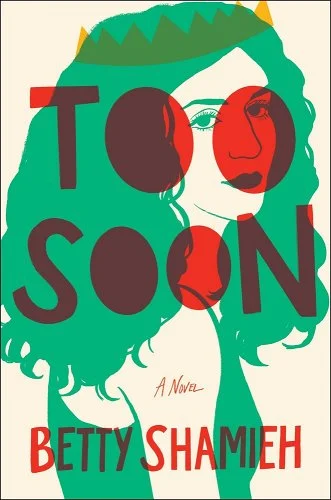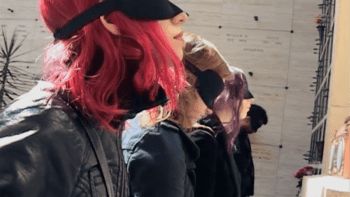
This is about a cult.
Or at least, a movie about a cult.
The Institute is a new documentary film about the Jejune Institute, one of the most fascinating, disorienting, and exciting experiences to emerge out of the Bay Area in the last several years. Lasting from 2008-2011, The Jejune Institute (commonly referred to simply as “Jejune”) left participants with more questions than answers. Is it real? Is it fake? Is it art? Is it a game? Is it a new-age religion? Is it a cult? And fittingly, the documentary leaves viewers similarly bewildered.
It all began when strange flyers started appearing around the streets of San Francisco, advertising bizarre devices like the Time Camera, which allowed its user to photograph the past through ultraviolet radiation manipulation. The flyers invited you to visit The Jejune Institute in San Francisco’s financial district to learn more and “unlock your future.” It was only a matter of time before curiosity took hold, word of mouth spread, and people started showing up. I was one of them.
In Spencer McCall’s film, we hear firsthand accounts from some of these people. At Jejune’s induction office, they sat in a room whose walls were filled with images of new-age cliches and pseudoscience – glowing orbs, interdimensional pyramids, mushrooms, and the like. An introductory video described the genesis of Jejune, a movement whose roots date back to the 1960s with the admirable objective of “Socio-Reengineering.” Under the guidance of luminary metaphysicist Octavio Coleman Esquire, the Jejune Institute helped put the human potential movement on the map. Upon leaving the induction office, participants, equipped with an induction card as their map, were taken on a wild goose chase through San Francisco’s Chinatown. To call it a scavenger hunt feels inaccurate, as the whole experience was imbued with sense of mystery and also realism, as if you were a detective following clues, looking over your shoulder for someone who might be following you. A metal ring anchored to the sidewalk led you to a sign in an alleyway, which led you to a metal box in a parking garage, which led you to calling a private investigator about Eva Lucien, a girl who went missing in 1988. In the end you wound up right where you started, watching a motorized diorama introducing another dimension known as “Elsewhere”.
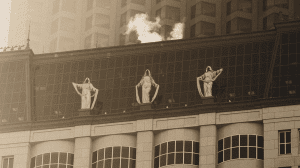 If you experienced The Jejune Institute, then you know that it made you feel excited and enlivened, like a kid. In speaking about her experience, one participant in the film says “everything outside seems better, like the colors are brighter and the world looks like a different place.” But Jejune also left you feeling slightly unsettled, and paranoid. Over the course of each phase (what I just described was only the first of many), you found yourself scouring the streets of San Francisco, following secret maps, listening to obscure radio broadcasts, looking for hidden symbols and asking about fake currencies. In short, you went crazy. As it progressed, you realized you were in the middle of a story unfolding in present time, as The Jejune Institute fought with another, even more secret society called the Elsewhere Public Works Agency, or EPWA. They were waging a battle over something called “nonchalance,” and you were caught in the middle. The further down the rabbit hole you went, the more the line between reality and fantasy became blurred.
If you experienced The Jejune Institute, then you know that it made you feel excited and enlivened, like a kid. In speaking about her experience, one participant in the film says “everything outside seems better, like the colors are brighter and the world looks like a different place.” But Jejune also left you feeling slightly unsettled, and paranoid. Over the course of each phase (what I just described was only the first of many), you found yourself scouring the streets of San Francisco, following secret maps, listening to obscure radio broadcasts, looking for hidden symbols and asking about fake currencies. In short, you went crazy. As it progressed, you realized you were in the middle of a story unfolding in present time, as The Jejune Institute fought with another, even more secret society called the Elsewhere Public Works Agency, or EPWA. They were waging a battle over something called “nonchalance,” and you were caught in the middle. The further down the rabbit hole you went, the more the line between reality and fantasy became blurred.
The Jejune Institute was the brainchild of Jeff Hull, an Oakland-based artist with a history in grassroots community art happenings. The interviews of Hull in the film offer an opportunity to glimpse behind the wizard’s curtain. Over the span of three years, Hull and his cohorts at Nonchalance crafted an elaborate and intricate narrative around the Jejune Institute. No stone was left unturned, from the specificity in Jejune’s downtown induction office, to the folks at Nonchalance fabricating fake players who posted to message boards about Jejune, trading information and clues and theories with real players. The effect was totally disorienting, but extremely exciting. Participants were immersed in a complex and intricate narrative, and became part of it themselves. It was not just a game, but a fully engrossing experience. Imagine that, while playing Clue, instead of rolling dice, you went to an actual billiard room with someone calling himself Colonel Mustard and examined a revolver.
By Jejune’s conclusion in 2011, only the most devoted players had made it to the final phase. The roughly 10,000 that had participated in the initial induction were down to less than a couple hundred. These people were committed, ready to fight for the EPWA and waiting for the perfect moment to employ their bioforce globe and overthrow Jejune for its use of false nonchalance. In effect, they had drunk the Kool-Aid. I was there, too. It was pretty delicious Kool-Aid.
Much like Jejune, The Institute challenges the viewer to figure out what’s real and what’s not. Having personally participated in Jejune several years prior, I was excited to see what I thought would be a straightforward documentary and have many of my questions answered. But I should have known better.
Director Spencer McCall plays with standard documentary conventions, using talking heads to dispense information. But as the film spirals onward, you begin to realize that not everything should be taken at face value, and you’re not sure where fact ends and fiction begins. The effect, for those who participated, is like getting thrown right back down that rabbit hole, and as you descend, you realize you’re not sure which way is up and which way is down. And for those who haven’t participated, it’s an opportunity to peek down that deep, dark hole.
“It was [Spencer’s] entire mad scheme,” Hull told me in an interview, “to do this film that was very meta. Like a narrative that almost implodes upon itself, as if it can’t even uphold itself. It’s a puzzle, and it’s a mind fuck, and it confuses me.”
Well, at least I’m not the only one.
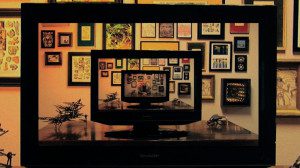 “One of the effects of that is that the uninitiated, or the people who are very skeptical, walk out of the documentary thinking it’s not a documentary at all and that the entire thing has been fabricated,” Hull said. And this is not too surprising, considering the difficulty in conveying such an immersive experience to someone who has no knowledge of it. It’s the same difficulty in trying to explain to someone how you wound up joining a cult; from the outside looking in, it looks ludicrous and insane, but from the inside, it makes complete sense. But that means The Institute might prove tiresome for the uninitiated, in the same way that watching an unfamiliar game (like cricket, for Americans) can be disinteresting. McCall’s efforts to subvert the standard, informational documentary and make a film that’s self-reflective compounds this effect.
“One of the effects of that is that the uninitiated, or the people who are very skeptical, walk out of the documentary thinking it’s not a documentary at all and that the entire thing has been fabricated,” Hull said. And this is not too surprising, considering the difficulty in conveying such an immersive experience to someone who has no knowledge of it. It’s the same difficulty in trying to explain to someone how you wound up joining a cult; from the outside looking in, it looks ludicrous and insane, but from the inside, it makes complete sense. But that means The Institute might prove tiresome for the uninitiated, in the same way that watching an unfamiliar game (like cricket, for Americans) can be disinteresting. McCall’s efforts to subvert the standard, informational documentary and make a film that’s self-reflective compounds this effect.
Hull continued, “I can see that it’s blurring the lines or has its own classification, but I don’t want it to be lost on audiences that Jejune really happened. The film is really kind of an exposé on this art project and what went wrong or what went right with the art project.” In this sense, the film does indeed succeed. For the uninitiated viewer, the blurring of the lines allows the viewer to sit in the seat of the participant and see what it was like to experience Jejune firsthand. A more straight-forward documentary certainly would not achieve this effect.
“I’m a big fan of the film,” Hull assured me. “I do view it as a calling card of sorts, to get the message out there, to raise awareness, really. The [project] inadvertently did have a real message and a real takeaway, and I think this serves a real vehicle for that.”
The greater dichotomy that made Jejune so successful and makes the film so interesting is the collision between the wonder of childhood and the reality of adulthood. With his art, Hull invited participants to suspend their disbelief, to buy into an alternate reality that existed in congruence with their own normal, everyday lives. Hull opened the door of possibility with the simple and powerful question, “What if?” What if there was this secret cult operating behind the closed doors of San Francisco? What if Eva Lucien hadn’t been kidnapped, but had entered an alternate dimension known as Elsewhere? What if we could harness the power within our own bodies to create a human force field? Hull jarred us from our responsible adult existences and made us realize that asking “what if?” is simply more fun. And when you stop insisting that you have all the answers and start asking “what if,” suddenly anything is possible. And it’s an addictive, perhaps destabilizing way to view the world, with wide eyes of possibility.
And this is evidenced in the extent to which some internalized the Jejune narrative. One character in the film, known as Organelle, took it so seriously that he started challenging other players that they weren’t devoted enough, that they didn’t understand the true message, that it wasn’t a game. And another participant is moved to tears in talking about Jejune, getting a tattoo of “Elsewhere,” and naming her dog Jejune. This is where the film is at its most captivating – examining the obsessiveness of these players who, under the auspices of a game, joined a fake cult. But looking at their behavior from the outside, one has to wonder, how fake is this cult, really?
When I mentioned the cultish feeling of it all, Hull agreed. “There have been a lot of movies in the last couple of years that are on the theme or subject matter of cults, and I’d like this to be in that school of movies.” He went on to tell me of his own involvement in the new age movement, having participated in an actualization seminar as a youth, and how much it empowered him. “But then there’s the point where you’re being exploited by the cult, where they are asking for more than is really healthy for you to give.”
Once again, the lines were getting blurred. When does something go from being mentally experimental to psychologically unsafe? When does something go from having a devoted following to becoming a delusional cult? Where is the line?
“As soon as you’re exploiting people and not empowering people, that’s the line, for me. So, we play with that idea of a cult, by winking or nodding at them, like they could be asked to drink the Kool-Aid. But we celebrate the things that might have gotten thrown out with the bathwater.”
As I sat with this, I remembered back to my experience with Jejune. It was exciting, to run around the streets of San Francisco looking for strange markings, not dismissing them as graffiti but seeing them as a potential piece to a fascinating puzzle. It was fun to imagine myself infiltrating the Jejune Institute, learning the secrets to the mythical Algorithm, which had the power to end all human conflict. It was rejuvenating, to feel like a kid again, and to look at everything in a new light. But at some point, fantasy once again hits up against that harsh existence known as ‘reality.’
When I voiced this to Hull, he empathized. “It’s a little bit like an acid trip, where you have this incredible notion, but at the end of the day, you’re like, ‘what was that?’ You’re building castles in the sky, feeling like you’re a kid again, having this sense that anything is possible. But at the end of the day, you still have to put your pants on one leg at a time and deal with reality. I guess the takeaway from that is that we can be more creative with our notion of what reality is. That’s the accomplishment of The Jejune Institute. You can build the idea of fun and play and spontaneity into the way we do things. You can institute wonder and discovery.”
Amen. Pass the Kool-Aid.
The Institute will be screening at The Exploratorium in San Francisco on October 25th. Jeff Hull and the games of Nonchalance will be orchestrating an interactive experience ; be on the lookout for the next large-scale Nonchalance project in the coming months.

